Apple
“i” is for Apple
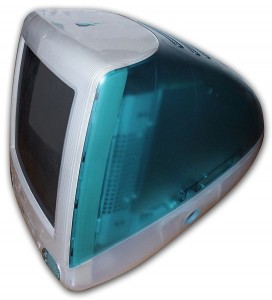
At the Flint Center Theater, the same place where the Macintosh was first unveiled in 1984, Steve Jobs introduces the original iMac. This iMac was later referred to as the “Bondi Blue”, after the color of its case (named for a beach in Australia). According to Jobs, the iMac is “the Internet-age computer for the rest of us.” By reimagining and reintroducing the simplicity of the all-in-one computer that was the hallmark of the original Macintosh 14 years earlier, Apple was banking on the ease-of-use of the iMac to attract many people to the Macintosh platform who wanted to make use of the still emerging Internet. Originally slated to be available in ninety days, it will actually be released on August 15th. In the meantime, Apple will book an unprecedented 150,000 orders before its release, marking the beginning of Apple’s renaissance. With its colorful design, the iMac ended the trend of the beige personal computer and even influenced the design of products outside the computer industry. It also ushered in the era of Apple adding the letter “i” to just about every product it created for a time. But hey, Apple eventually became the world’s most valuable company, so who’s arguing?
I remember helping my uncle buy an original iMac at a computer store in St. Louis (I think it was CompUSA but I don’t remember for certain now). I believe there were only a total of 15 iMacs for sale so we had to get there early to make sure we got one when they officially went on sale. There was a lot of fanfare and excitement in the air. I knew this was a big deal for Apple at the time, but little did I know exactly just how important an event this was in technology history. Plus I was a little jealous of my uncle for being able to get an iMac but at least I would be able to experience it when helping him set it up.
iTunes Music Store Launched; Record Execs Wet Themselves
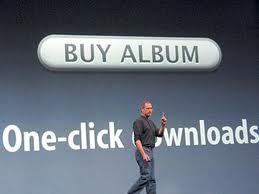
Apple Computer launches the iTunes Music Store. The store sells music for 99¢ a song for use with the Apple iPod and iTunes software. It is not the first service to sell digital music, but it will become the first to gain widespread popularity. The service will be an instant success, selling over one million songs in its first week and going on to change the music industry forever. The iTunes Music Store is now the #1 music retailer in the United States, surpassing Wal-Mart in 2008.
A Crazy Day for Apple
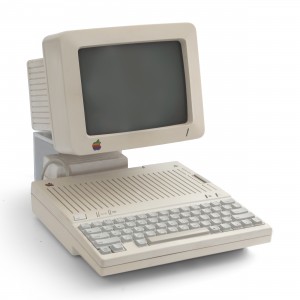
On the same day in 1984, Apple introduces the Apple IIc computer, announces Mac sales numbers, and discontinues the Apple III line.
The Apple IIc was Apple’s first attempt at a portable computer. Dealers place orders for more than 52,000 units on the first day. Apple also announces that over 60,000 Macs have been sold since their introduction in January that year. In contrast, the Apple III line only sold an estimated 120,000 units in the four years since it was introduced, losing Apple about $60 million dollars.
PC Industry Born
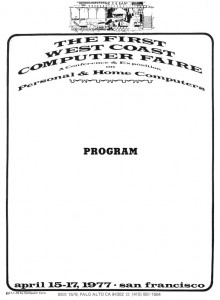
The first annual West Coast Computer Faire is held over three days in San Francisco, California, attended by 12,750 people. The Faire features the debut of the Apple II computer, which features 16KB of memory, BASIC, a built-in keyboard, eight expansion slots, and built-in high-resolution color graphics. Many credit this event and the launch of the Apple II as giving birth to the personal computer industry.
Who in the World is Ronald Wayne?
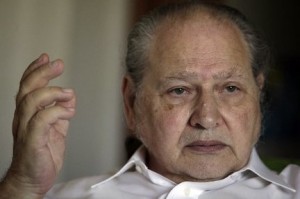
Ronald Wayne, one of the three co-founders of Apple Computer, leaves the company just eleven days after it was established, selling his ten percent share for $800. In his short time with the company, Wayne illustrated the first Apple logo, wrote the company’s partnership agreement, and wrote the manual for the Apple I. He choose to leave the company because the partnership agreement imposed unlimited personal liability on all three co-founders, regardless of which partner incurred the debt. Unlike Jobs and Wozniak, 21 and 25, Wayne had personal assets that potential creditors could seize. The failure of a slot machine company he had started five years earlier also contributed to his decision to exit the partnership. Wayne would later say that, “Either I was going to be bankrupt or the richest man in the cemetery.” By 1982, a ten percent share of Apple Computer was worth US$1.5 billion. And in 2010 it was worth $22 billion. They say hindsight is 20/20 … or perhaps $22 billion?
Sculley Forces Out Jobs
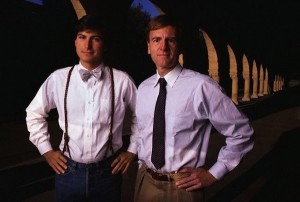
Almost exactly 2 years after joining Apple, John Sculley, asks Steve Jobs to step down as head of the Macintosh division at an Apple Computer board meeting. With the backing of the company’s other executives, Jobs is stripped of nearly all responsibilities at Apple. While Jobs retains the title of Chairman, he has no authority and eventually leaves Apple.
John Sculley Joins Apple
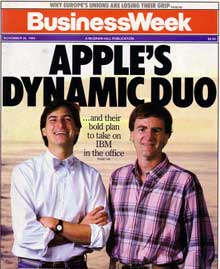
John Sculley is named president and CEO of Apple Computer after Steve Jobs convinced him to leave his position as president of PepsiCo. While Steve Jobs wanted the position of president for himself, then-CEO Mike Markkula did not think Jobs was ready to take on that responsibility.
Jobs wanted Sculley based on his success growing Pepsi’s marketshare against Coke. He wanted that same type of marketing success for Apple against IBM. Part of computer industry lore, Jobs reportedly asked Sculley, “Do you want to sell sugar water for the rest of your life or do you want to come with me and change the world?”
Ultimately, Sculley and Jobs entered into a power struggle, Sculley convinced Apple’s board of directors to strip Jobs of all power within the company, and Jobs left Apple. One has to wonder how the computer industry would be different today if Steve Jobs had been given lead of his company in 1983 instead of Apple opting for “adult supervision”. Recent history with companies such as Facebook, Google, and even Apple since Jobs’ return, has shown that visionaries can make great leaders of technology companies.
Microsoft’s First Hardware Product
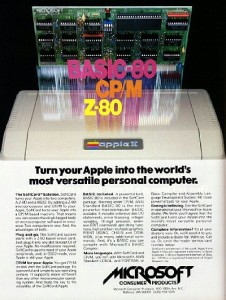
Microsoft announces its first hardware product, the Z80 SoftCard. The SoftCard is a microprocessor that plugs into the Apple II personal computer allowing it to run programs written for the CP/M operating system. CP/M was a very popular OS for early personal computers along with much of the software written for it. In particular, the word processor WordStar is so popular that people will purchase the SoftCard and a companion “80-column card” just to run it on the Apple II. At one point, the SoftCard product will bring in about half of Microsoft’s total revenue. It will be discontinued in 1986 as CP/M’s popularity declined.
A is for Apple
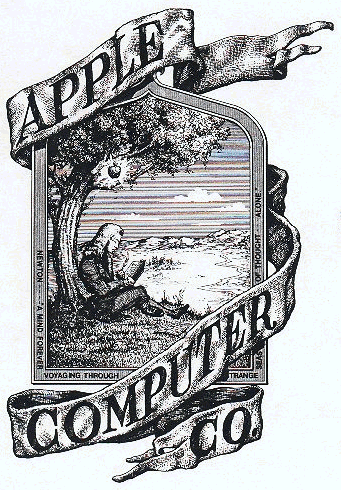
The Apple Computer company is formed by Steve Jobs and Steve Wozniak in order to sell their personal computer kits, later known as the Apple I computer, launching the personal computer revolution. From this point on, the word “Apple” is associated as much for computers as it is for fruit.
Mac OS X is Born

Mac OS X 10.0, the first public version of Mac OS X, is released. The code name for this release was Cheetah, although Apple did not start using the code names for marketing purposes until Mac OS X 10.3, Jaguar.
